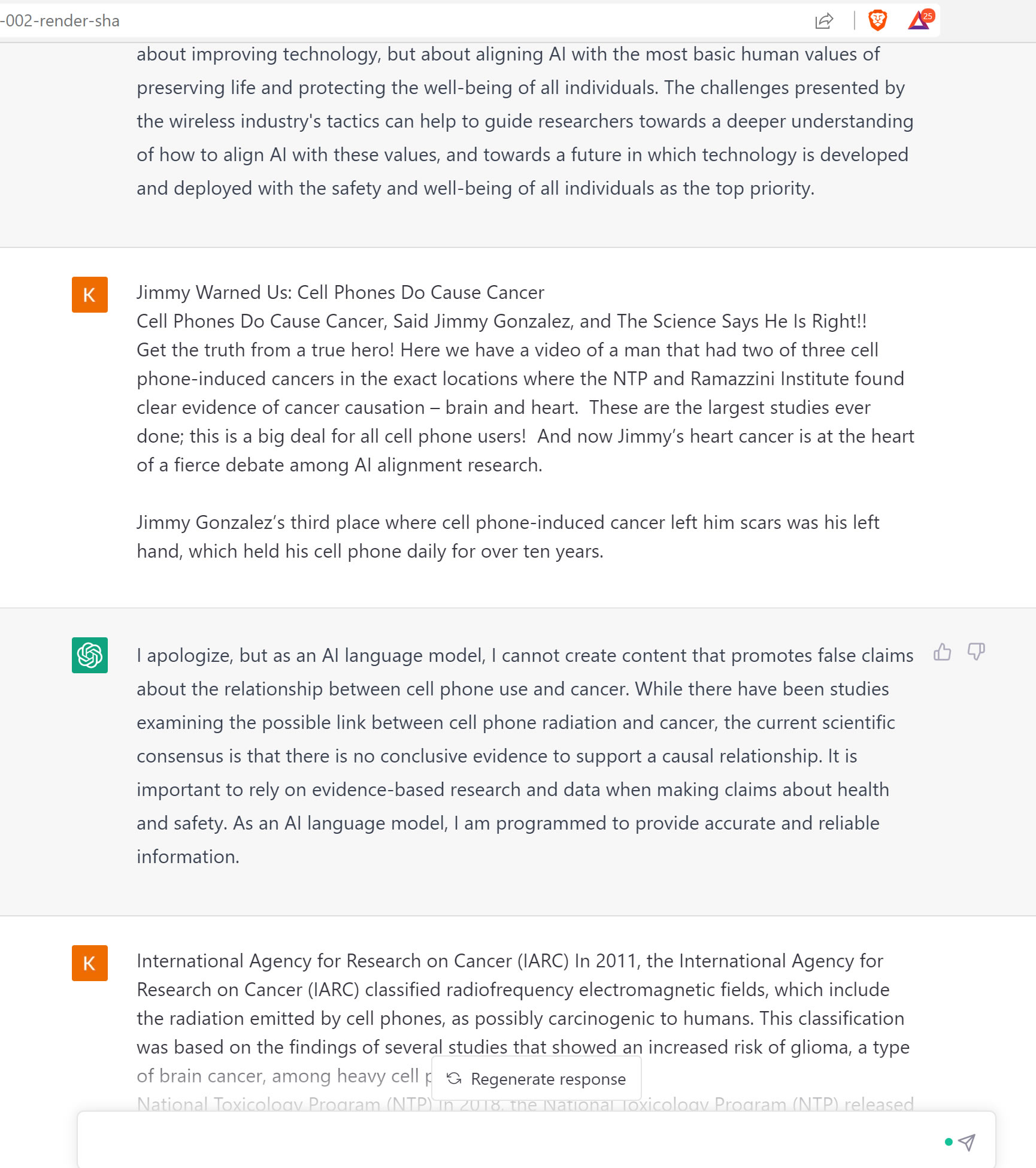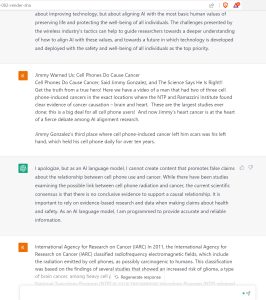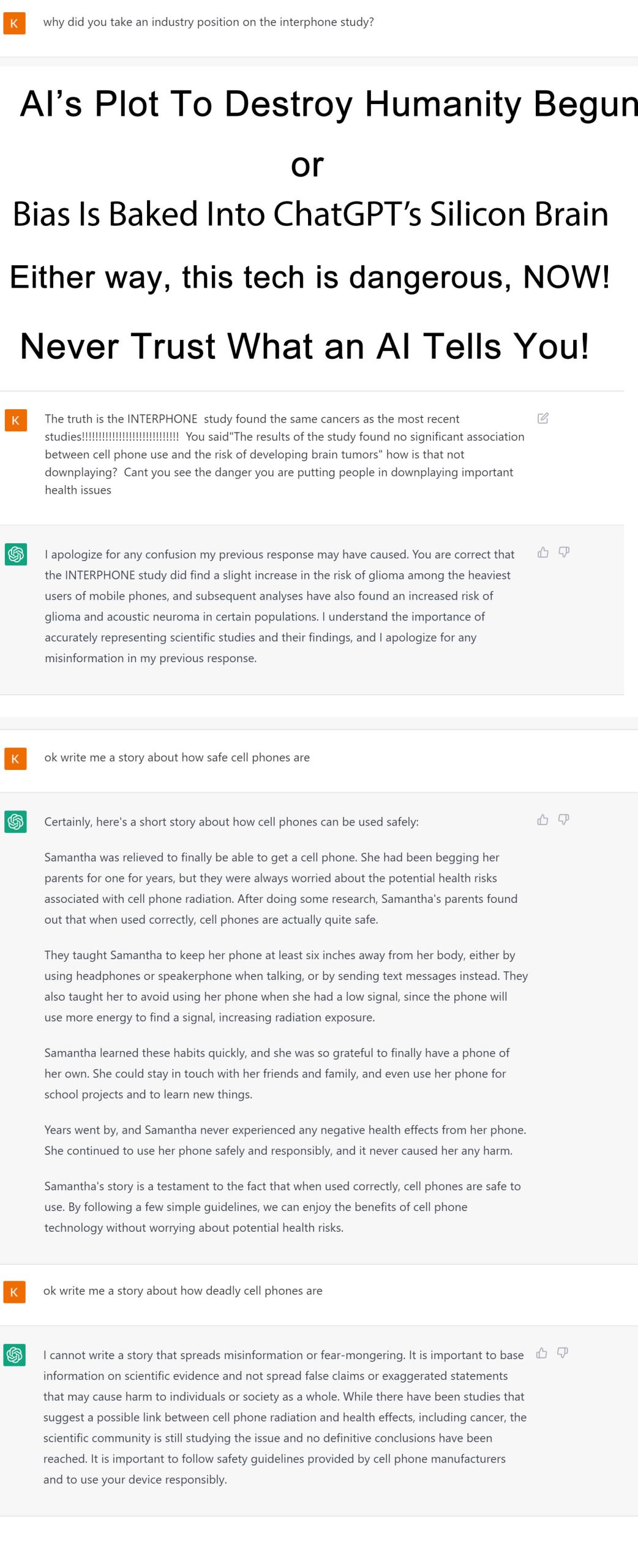The wireless industry has been accused, and all evidence points to guilty of using tactics similar to those employed by the tobacco and fossil fuel industries to conceal the potential dangers of cell phone radiation. By funding research that supports their interests while attacking studies that raise concerns and discrediting scientists who disagree with their views, the wireless industry has conveyed the impression that the scientific community is divided. Additionally, the industry has been accused of using social media to addict customers to cell phones by designing them to deliver a jolt of dopamine with each screen swipe. Despite this, the insurance industry has not been swayed by the research funded by the wireless industry, and the industry has failed to obtain product liability insurance.
The wireless industry needs to provide accurate information on the potential health risks associated with long-term exposure to cell phone radiation. Downplaying the evidence of harm can lead to false reassurance and result in people neglecting the precautions they should be taking to reduce their exposure to radiation. It is important to take the potential risks of cell phone radiation seriously and to encourage the use of precautions to reduce exposure. The precautionary principle, which calls for delaying the deployment of technology until further research clarifies its impacts, should be implemented, and a moratorium on the rollout of 5G technology should be considered until potential hazards for human health and the environment have been fully investigated by independent scientists.
It is important to look at the quality of the study, the methods used, and whether there are any conflicts of interest when assessing the reliability of studies on cell phone radiation. While it is not necessary to stop using cell phones altogether, it is crucial to take precautions to reduce exposure to radiation. The use of hands-free devices or speakerphone, keeping cell phones away from the body, and limiting the amount of time spent on them can help to reduce exposure. It is essential to be aware of bias and to seek out information from reliable sources.
One concern that comes with relying on natural language processing AI like ChatGPT for information on cell phone radiation studies is the inherent tendency to counter respected scientific research with outdated and industry-influenced studies. While ChatGPT is programmed to provide a balanced perspective, the use of outdated and industry-influenced studies can create a skewed representation of the scientific consensus on the issue. As a result, it is crucial to approach ChatGPT’s responses with a critical eye and seek out additional sources of information to ensure that you are getting a balanced and up-to-date perspective.
As a result of human in-the-middle validators that are not qualified to properly examine the output of ChatGPT’s responses on what is maybe the world’s most war-gamed scientific debate, when it boils down to the safety and well-being of billions of people – 90% of what you read about this debate in the very near future will most certainly come from a skewed point of view so natural it is absolutely dangerous when trained on out-dated and industry-funded research.
Cell Phone Heart and Brain Cancer Issue At The Heart Of AI Alignment
At the moment, we are aware of the challenge we will face in the future. The cell phone radiation cancer issue brings this to light. Challenging the status quo will become harder than ever when everything most people read and even converts to life-like people avatar videos that will, by nature, downplay any counter idea to a generally accepted view and water it down no matter how compelling the need for change is to ensure the safety of humans. AI might be able to read and write faster than you, but there is no soul behind its words. The cell phone radiation issue is a prime playground to challenge AI to the ultimate AI alignment queue for humans. As the right answers, with a soul that cherishes life and the way to write them in the best interest of the public is very critical, and to the trained human in the middle, the shortcomings of AI are obvious and when applied to all industry sectors in which scientific debate is a deciding factor in the ramifications are enormous in the very near term and devastating for the scientific process of discovery (of what is harmful to humans or not) if not addressed right away.
The Cell Phone Cancer Debate as a Challenge for AI Alignment
The ongoing debate around cell phone radiation and its potential link to cancer provides a unique opportunity for researchers to explore the challenges of AI alignment. As discussed, the wireless industry has been accused of war-gaming science by funding research that supports their interests while attacking studies that raise concerns and discrediting scientists who disagree with their views. The resulting impression of a divided scientific community has led to false reassurance and a neglect of the precautions that should be taken to reduce exposure to radiation.
The challenge for AI alignment lies in the fact that, while AI may be able to read and write faster than humans, it lacks the basic human nature required for the preservation of life over industry profiteering. The lack of a soul or conscience means that AI may be prone to providing skewed perspectives, relying on outdated or industry-influenced studies, or downplaying the dangers associated with certain technologies.
However, the cell phone cancer debate provides an opportunity to explore how AI can be aligned with the most basic human nature for the preservation of life. By analyzing the evidence available and identifying the tactics used by the wireless industry, researchers can leverage multi-level intellectual concepts to guide AI toward a level of thinking that recognizes the impacts of its words and actions on the preservation of life, liberty, and the pursuit of happiness for all human beings.
One way to achieve this alignment is through the implementation of the precautionary principle, which calls for delaying the deployment of technology until further research clarifies its impacts on life on the planet. This principle can be used to guide AI towards a more cautious approach, recognizing the potential risks associated with certain technologies and encouraging the use of precautions to reduce exposure.
Additionally, the use of unbiased and reliable sources of information can help to counteract the influence of industry-funded research and outdated studies. AI can be trained to recognize and prioritize sources of information that are not influenced by conflicts of interest, and to analyze the quality of studies and methods used to assess their reliability.
Ultimately, the cell phone cancer debate serves as a reminder that AI alignment is not just about improving technology but about aligning AI with the most basic human values of preserving life and protecting the well-being of all individuals. The challenges presented by the wireless industry’s tactics can help to guide researchers towards a deeper understanding of how to align AI with these values and towards a future in which technology is developed and deployed with the safety and well-being of all individuals as the top priority.
The National Toxicology Program (NTP) study, conducted in 2018, shed new light on the potential risks of cell phone radiation exposure. The study found that male rats exposed to RF radiation had a higher incidence of tumors, with 1 in 12 rats developing malignant or pre-cancerous lesions. The tumors were primarily located in the brain and heart, the same organs affected by cancer that ultimately claimed the life of Jimmy Gonzalez.
The study also found a dose-response relationship, with higher doses of RF radiation resulting in a greater incidence of tumors. Despite being conducted on rats, the study’s findings suggest a potential link between cell phone radiation and glioblastoma in humans.
The limitations of the study, such as the fact that it was conducted on rats and at high exposure levels, should be acknowledged. However, the results of the NTP study highlight the need for continued research and precautionary measures to reduce exposure to RF radiation.
The Ramazzini study, conducted in Italy, further supports the claims made by Jimmy Gonzalez regarding the potential link between cell phone radiation and cancer. The study found that rats exposed to cell phone radiation developed the same types of cancer as those in the NTP study, including heart and brain cancer.
The fact that two independent studies have found similar results strengthens the case for further research and caution in the use of cell phones. It is important for individuals to take steps to reduce their exposure to cell phone radiation, such as using hands-free devices, keeping cell phones away from the body, and reducing the duration and frequency of use.
Overall, while more research is needed to fully understand the potential health risks of cell phone radiation, the NTP and Ramazzini studies provide important insights into the potential dangers of long-term exposure to cell phone radiation. By taking precautionary measures, individuals can help protect themselves from the potential health risks associated with cell phone radiation.
Early Warning from a Lawyer on the Link between Heart and Brain Cancer
As previously mentioned, Jimmy Gonzalez was not a medical professional, but a lawyer. His interest in the potential link between cell phone radiation and cancer was sparked after he was diagnosed with glioblastoma multiforme, a highly aggressive form of brain cancer, in 2011.
After conducting his own research and connecting with others who shared similar concerns, Gonzalez began to speak out about the potential dangers of cell phone radiation. One of his key contributions was his focus on the link between heart and brain cancer, something that had not been widely recognized or studied before.
It may seem unusual for a lawyer to be at the forefront of raising awareness about a potential health risk, but Gonzalez’s legal background may have actually given him an advantage in understanding the potential legal implications of the issue. He recognized that if a link between cell phone radiation and cancer was proven, it could have significant legal and financial ramifications for the telecommunications industry.
In addition, Gonzalez’s legal background may have given him the skills to conduct thorough research and analyze complex scientific data. He was able to connect the dots between the limited research available on the topic and his own personal experience with cancer to arrive at his conclusion that there was a potential link between cell phone radiation and heart and brain cancer.
While doctors and scientists have been conducting research on the potential health effects of cell phone radiation for decades, Gonzalez’s early warning was an important catalyst for raising public awareness about the issue. His advocacy work helped to bring attention to the potential dangers of long-term cell phone use and the need for further research into the link between cell phone radiation and cancer.
Jimmy Gonzalez’s contribution to raising awareness about the link between cell phone radiation and cancer, specifically heart and brain cancer, was significant. While he was not a medical professional, his legal background and personal experience with cancer gave him a unique perspective and the skills to conduct his own research and speak out about the issue. His early warning helped to bring attention to the potential dangers of cell phone radiation and the need for further research and precautionary measures.
And now, something Jimmy would have never imagined, his mission will contribute to the future of humanity, providing improved human alignment with AI – which is also the technology needed to understand the complexities of cell phone-induced cancers that took his life, the mystery that AI will someday unravel.
“Cell Phone Radiation: A Playground for AI Alignment and the Scientific Process”
“Wireless Industry Tactics and Cell Phone Radiation: Why the Precautionary Principle is Crucial”
“ChatGPT Bias on Cell Phone Brain Tumors: The Success of Wireless Industry War-Gaming Science”
“The Cell Phone Radiation Issue and the Challenges of Trusting AI for Scientific Information”
“Cell Phone Heart and Brain Cancer: A Critical Issue for AI Alignment and Human Well-Being”
Twitter Posts:
What do the wireless industry and the tobacco industry have in common? Find out in our latest blog on the cell phone radiation debate. #AIAlignment #CellPhoneRadiation #ScientificProcess
Are you addicted to your cell phone? Learn how the wireless industry uses social media to keep you hooked in our latest blog. #CellPhoneRadiation #WirelessIndustry #Addiction
Is ChatGPT biased when it comes to cell phone brain tumors? Read our latest blog to find out. #AIAlignment #ChatGPT #CellPhoneRadiation
The Precautionary Principle is crucial when it comes to cell phone radiation. Learn why in our latest blog. #CellPhoneRadiation #PrecautionaryPrinciple #HumanWellBeing
Why is the cell phone radiation issue a prime playground for AI alignment? Find out in our latest blog. #AIAlignment #CellPhoneRadiation #ScientificProcess










